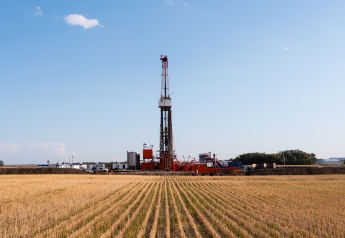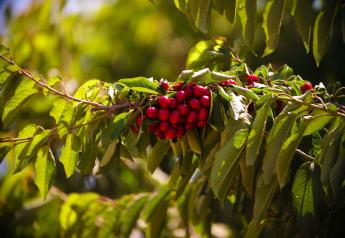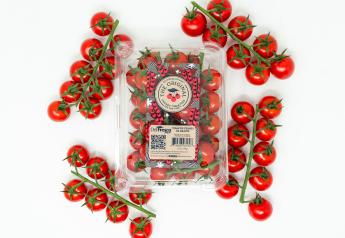Fresh produce traceability demand will continue

Knowing the origin of food is important for a certain segment of consumers, especially in developed countries. This trend will gradually gain strength until it becomes a basic requirement.
The demand for traceability of agricultural products has increased significantly in recent years, mainly because of the steady increase in outbreaks of microbial contamination tied to certain fresh foods. These outbreaks affect consumer confidence and generate negative consequences for the entire production and marketing chain.
Thus, agricultural traceability is becoming more and more essential. It’s not surprising that laws are emerging to regulate the issue, since customers want to be confident that the food they eat won’t cause health problems.
It is really important to highlight that, today, thanks to technological advances in other industries, we already have the necessary tools to establish strong traceability systems that cannot be breached.
What is food traceability and why is it important?
The term traceability of food products is relatively recent, emerging in 1996 as a government response to the demands made by certain groups of consumers in specific developed countries.
According to the United Nations’ Codex Alimentarius Commission, traceability is “the ability to follow the movement of a food through specified stage(s) of production, processing and distribution.”
The goal is to prevent products that do not meet safety specifications from being sold. Additionally, if a public health problem arises, a product can be traced to determine its origin and distribution, allowing it to be withdrawn from the market as quickly as possible and avoiding additional harm to consumers.
Although food traceability guidelines have been applied for a long time, especially in developed countries, there are still many improvements to be made. And we must consider that, in the vast majority of developing countries, traceability is at an early stage, so there is still a lot of work to be done.
What tools exist to enable traceability in agriculture?
Although, in essence, traceability of agricultural products implies basic concepts that are easy to understand, implementation is more complex. It requires the collection and documentation of information during each stage of a product’s supply chain. The major hurdle is that there is currently no standard that covers all stages of the supply chain.
In the future, if a customer wants to know where a food product that they consume regularly comes from, they should be able to access key information about the supply chain. This would include information such as the origin of the seed, the planting process, agronomic operations, fertilization, irrigation, the method of harvest, region of production, transport, intermediaries, place and method of storage, and water footprint.
But while we work toward a system that would permit that, one of the tools used to guarantee traceability of food products is a certification, through which the certifying entities guarantee — to the extent of their authority — that an agricultural product has been produced according to certain standards accepted by the industry. However, this does not necessarily guarantee all aspects of production, since each certification has a defined scope, and there is no certification that covers all aspects of food production, distribution, processing and marketing.
It’s also important to mention that there is no global consensus on the application of traceability for food products. Each country has its own laws and certifications, with the U.S. and the European Union leading the way. Each country defines traceability differently, so laws vary in many aspects.
Barcodes are also widely used as a simple way to identify goods and services throughout the world. This standardized system has produced great results in global trade, but it needs to be updated or supplemented with other tools to deliver information to consumers, as well.
What technologies could increase agricultural traceability?
If you go to the supermarket today, you'll find fruit, vegetables and other agricultural products from all over the world, about which you may know practically nothing. You don't know where that banana comes from. You don't know how that lemon was produced, what certifications that pineapple carries or the water footprint of that strawberry. What’s more, if you want to discover this information, it won’t be easy.
The current traceability tools work, but they have their limitations. The main issue is that they don’t provide all the information that consumers want to know, which is creating a need in the agribusiness. Meeting that need will require new tools.
The main tool that's emerging as a viable option to increase traceability of agricultural products is blockchain. The lack of alternatives is not a problem, since blockchain has all the characteristics necessary to guarantee agricultural traceability.
Today, the term "blockchain" should sound familiar, as the basis behind cryptocurrencies. However, its structure is also ideal for applying to food traceability. It’s a shared, public (although anonymous, in individual terms), unalterable registry of data that can be accessed and verified by anyone.
Blockchain’s inherent characteristics will enable us to overcome the main challenge in food traceability, which is continuity, with data added during each stage of the supply chain. Each product could potentially carry a large volume of information, and until now, there has been no way for all that information to be transmitted between one stage of the supply chain and the next. That's why blockchain could become the common language for global agribusiness, as long as it becomes a standard that everyone agrees to use.
But blockchain is a highly specialized tool. It would be very difficult for agribusiness players to implement this system on their own, which is why experts will need to enter the agricultural sector. There must be a synergy between the people producing the food, blockchain specialists and consumers that want to know about their food.
Again, blockchain would have to become a widely accepted standard. Otherwise, it will be nothing more than another partial solution, enabling partial traceability, with the overall panorama remaining in darkness — as has been the case up until now.
Olmo Axayacatl Bastida Cañada is a senior content analyst at Produce Pay Inc., a Los Angeles, Calif.-based produce broker.







